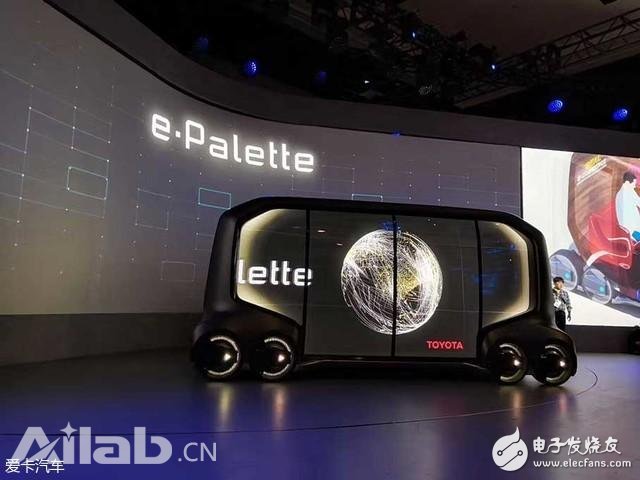
Privacy statement: Your privacy is very important to Us. Our company promises not to disclose your personal information to any external company with out your explicit permission.
Select Language
CES in 2018, standing at dawn of artificial intelligence.
On January 8th, local time, Intel, Baidu, Mercedes-Benz and other Internet and IT, digital, home appliances, and auto giants held several conferences in Las Vegas. The most striking was the autopilot and artificial intelligence platforms.
Here, in the small field of their own to toss the product to the extreme, has become insignificant. The message conveyed by CES is that cross-border, connected, reorganized, collective evolution, structural innovation and evolution are the direction.
Joining the tide of artificial intelligence, the giants are already struggling.
Auto driving dark battle
On the first day of this CES, the most eye-catching product release was the self-driving car, which was full of heavyweights.
The most explosive display is from Baidu. At 6 o'clock on the morning of January 9, Beijing time, Baidu used the way of connecting China and the United States to show the spectacular scene of a "big parade" held by a driverless team of 10 vehicles around Baidu Building. The 10 cars of this Apollo team, in addition to Baidu’s own unmanned vehicles, also have unmanned vehicles jointly developed with partners such as Great Wall, Chery, Jinlong, Beiqi and Zhixing Technology, including passenger cars and commercial vehicles. 10 different types of unmanned vehicles with different functions, such as work vehicles.
Baidu's autopilot platform Apollo 2.0 was officially released, and Apollo 2.0 has been able to support the automatic driving of simple urban roads. Baidu's US R&D center, the team has reached the scale of about 200 people, and Apollo's two teams in China and the United States are working around the clock and high-speed iteration.

The traditional car giants are not to be outdone. Toyota exhibited a new e-Palette travel platform, which is completely different from Baidu.
The E-Palette is a purely electric self-driving car with a sci-fi design and a square design. The doors are side-sliding and equipped with eight wheels that look a bit like a streamlined container with wheels.
The reason why it is a platform is that the E-Palette can be customized and modified according to different needs. The open platform is used for sharing the use of vehicles, merchandising, and cargo transportation. At the same time, it can be flexibly transformed, for example, it can be used for commuting at 7 o'clock in the morning and can be converted into a hospital shuttle at 10 o'clock.
It is understood that e-Palette has already reached cooperation with companies such as Pizza Hut, Uber, Amazon, Mazda and Didi. At the same time, Toyota is actively promoting this project, hoping to make e-Palette unveiled at the 2020 Tokyo Olympics, and it will become popular in 2023.
Toyota has targeted technology giants such as Google, Apple and Facebook. Toyota Motor CEO Akio Toyoda said, "My goal is to transform Toyota from a car company into a mobile travel company. The company's competitors have also turned into tech giants like Google, Apple and Facebook. But I care more. Get things done, not get the first."
Chip giant NVIDIA launched two new software platforms: DRIVE IX and DRIVE AR. DRIVE
IX is an intelligent experience software development kit that provides AI assistive functions for drivers and passengers with sensors inside and outside the body. DRIVE AR is an augmented reality software development kit, and the software platform for AI cars will incorporate computer vision, computer graphics and AI. DRIVE AR will enable the next generation of augmented reality interface to provide information points of interest, create alarm alerts and navigate while driving.
Professor Amnon Shashua, co-founder of Intel Mobileye, is now integrated into many ADAS vehicles, such as Ford, GM, Audi, BMW, Honda, Nissan, Hyundai, etc.
Intel's integration of the automotive-grade Intel Atom processor and the MobileyeEyeQ5 chip into the latest autopilot platform provides an industry-leading platform for scalability and versatility for 3 to 5 autopilot. Among them, Mobileye's technology is playing an important role in emergency braking, lane keeping, and traffic signal recognition.
In addition to the existing technology sharing, Intel also announced a new autonomous driving platform, which includes two EyeQ5 chips and an Atom chip. At present, SAIC has become the latest partner of Mobileye.
There are also a lot of tech giants you know that have also entered the autopilot industry chain.
Matsushita, which manufactures household appliances, has already entered the battery market for new energy vehicles and has invested in the development of next-generation EV batteries. At the same time, Panasonic also cooperated with Amazon Alexa to develop a smart car control interactive system.
BlackBerry, the former smartphone maker, signed an agreement with Baidu to jointly develop automotive software.
The Internet of Things of home appliance companies used to be limited to the interconnection between various home appliances manufactured by them. At CES, Samsung announced plans to expand its IoT platform to the automotive sector.
However, the first development of self-driving Google, on the first day, there is no relevant release of automatic driving, I do not know what Google Waymo is thinking.
Artificial intelligence platform
July 06, 2023
इस आपूर्तिकर्ता को ईमेल
July 06, 2023

Privacy statement: Your privacy is very important to Us. Our company promises not to disclose your personal information to any external company with out your explicit permission.

Fill in more information so that we can get in touch with you faster
Privacy statement: Your privacy is very important to Us. Our company promises not to disclose your personal information to any external company with out your explicit permission.